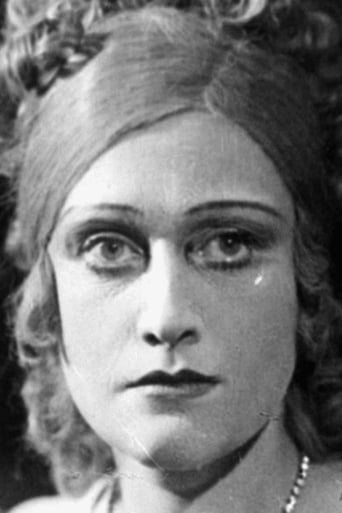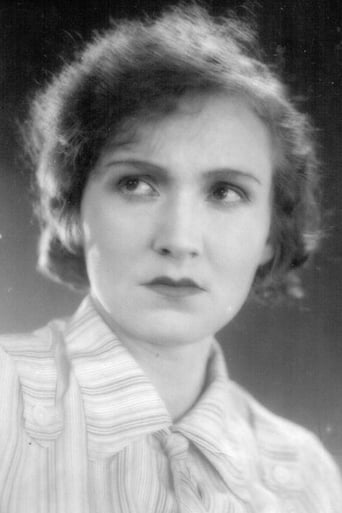UnowPriceless
hyped garbage
Ceticultsot
Beautiful, moving film.
WillSushyMedia
This movie was so-so. It had it's moments, but wasn't the greatest.
Keeley Coleman
The thing I enjoyed most about the film is the fact that it doesn't shy away from being a super-sized-cliche;
ncisabbyfan30
I stumbled upon this movie thanks to Mystery Science Theater and I can safely say I could never sit through this movie without the MST3K guys riffing on it left and right. Other reviewers have mentioned the American version (what??) is worse than the Finnish-Russian version. What's the difference? It's the same movie! Even if the dubbing was bad, having better dubbing would not make the movie better. I couldn't even tell what the plot was. This movie was about as confusing as another Russian toilet creation called Jack Frost, which I also stumbled upon thanks to Mystery Science Theater. If some people call this a classic, I'd love to know what they consider a bad movie.
MartinHafer
In the 1960s, some idiots bought this Finnish-Soviet production and brought it to the screen. The problem is that the plot involving a Finnish folk tale was confusing to Western audiences, so the film was chopped to pieces--and almost 30% of the original film was thrown on the cutting room floor. As a result, it's very dull and confusing--and not worth your time. There is LOTS of narration to fill in the gaps but the film never is interesting or coherent. HOWEVER, I am not maligning the original film--just this terrible dubbed mess seen in the States.While bastardizing a movie like this seems odd today, American-International did this a lot--buying up Russian and Japanese films and creatively editing them into American films. Sometimes they inserted down-on-their-luck actors into the films (such as Basil Rathbone) and I sure would rather see the original movie--which MIGHT actually be pretty good. But, in the 60s, they rarely trusted foreign subtitled films--and sloppily dubbed them. Sad...and stupid.
jennyhor2004
A joint Finnish-Soviet fantasy production aimed at a family audience, "The Sampo" is a very loose retelling of some of the tales in the Finnish national epic Kalevala. The film's focus falls on the fortunes of the hunter Lemminkäinen (Andris Oshin) and the blacksmith Ilmarinen (Ivan Voronov) as they battle the evil witch Louhi of the North Country (Pohjola). The trouble starts when Louhi (Anna Oroshko), greedy for personal wealth, decides she wants a sampo made. The only person in the world with the knowledge and skill to make a sampo, a magical object that can dispense endless riches, is Ilmarinen so Louhi contrives a scheme to force him to come to her. She kidnaps his beautiful young sister Annikki (Eve Kivi) and holds her prisoner; the news soon reaches Ilmarinen. Lemminkäinen has been wooing Annikki so he and Ilmarinen leave their community Kaleva and travel together to Pohjola to rescue Annikki. Louhi demands ransom in the form of the sampo and another arduous task from both men so they oblige and eventually Annikki is released to go back home with them.Sounds all very straightforward but some complications arise: Lemminkäinen decides Louhi can't be allowed to keep the sampo all to herself so he swims back to the witch's cave hideout while Ilmarinen and Annikki continue home. Lemminkäine 's rash actions endanger himself and his entire community in Kaleva as Louhi swears vengeance on him and tries to destroy his people by stealing the sun. Väinämöinen (Urho Somersalmi), portrayed as the community's leader, leads his people in a cooperative effort to fight Louhi and her army of sorcerers. Unfortunately for everyone, the sampo itself ends up destroyed, its parts scattered throughout the world, and Lemminkainen is only able to retrieve a small part for Kaleva."Sampo" is a series of little episodes in an overarching story about ambition and greed and the disasters they cause along with the value of cooperative effort in overcoming a great enemy. There is some redemption as well. At least the moral messages that appear compensate for the patchy good-versus-evil plot which doesn't do justice to the epic's complexity and dark characters. Some original Kalevala stories are worked into the movie but in a way that drains them of their power and prevents them from enriching the plot and its characters: to take one example, the subplot in which Lemminkäinen's mother (Ada Voitsik) rescues her son and brings him back to life is so whitewashed from its original that a lesson about effort and sacrifice is precluded and so the subplot becomes unnecessary. One story that unfortunately didn't find its way into the film is Louhi's all-out showdown with Väinämöinen, Lemminkäinen and Ilmarinen in the boat carrying the sampo; the script-writers substituted two weak episodes separating the fight and the sampo's destruction.The film's main asset is its special effects: they look cheap and some are cheesy but they're right for the job and aren't excessive for their scenes. (Now that would be cheesy!) Ilmarinen's separate creations of a horse and boat from fire and metal are suitably awe-inspiring and his sampo, a slightly hokey creation of coloured crystal, actually gains credibility as a wealth generator and then as a good luck charm once in pieces. Scenes in which Kaleva is cursed with everlasting blizzard and winter and in which some unfortunate people are covered over with snow are commendable. On the other hand some effects are quite comic and probably unnecessary: the twirling bear shot merely looks weird and creepy and the scenes with a talking birch tree are laughable.Speaking of trees, yours truly finds the main characters Ilmarinen and Lemminkäinen as solid, expressive and unyielding as wood: they don't so much talk to each other and to others as declaim their sentences. Lemminkäinen dares just about anything and everything to knock him over – his face is frozen into expressions of resolution of varying degrees – and even death doesn't wipe that mask off his visage. Annikki is just a McGuffin figure to get Lemminkäinen and Ilmarinen up and running to Pohjola to meet the witch. The only worthy acting (maybe over-acting) comes from Oroshko who clearly relishes playing Louhi. Believe it or not, Oroshko is female in spite of her character's very mannish bearing and appearance, overgrown eyebrows. Some of Louhi's sorcerers offer performances to match Oroshko in overdone drama, especially when they think of the sampo and say in wonder: "…. sampo! …" and get that dazed faraway look in their eyes, but the camera doesn't pay much attention to these individuals.The film looks very beautiful and colourful in a way that might remind viewers of a certain age of Walt Disney nature documentaries of the 1950s – 60s; wherever the opportunity beckons, the camera lavishes its gaze on the silvery forests, the lakes and rivers, and general Finnish countryside scenery. The impression is of serenity and tranquillity in the dark and still birch trees. Opening scenes in the movie show rural people at work cutting down trees to clear the land for planting crops. Once the focus is on Lemminkainen and Ilmarinen journeying to Pohjala to save Annikki, the film pays no more attention to portraying rural Finnish life other than showing how men and women dress and how the interiors of their houses might appear. Unfortunately being a good-looking fantasy film isn't enough: a strong plot, lots of adventure, memorable characters tested and matured by adversity, and interactions with conflict – and the original Kalevala has plenty of these! – are just lacking here.
asimov13647
My only exposure to Sampo (aka The Day the Earth Froze) comes by way of Mystery Science Theater 3000. I have an extensive collection of MST3K movies (almost 200) and of those the Russo-Finnish movies (Sampo, The Sword and Dragon, Jack Frost, et al) are among my favorites. They lend themselves to Mystification but are entertaining and, (dare I say it?) absorbing in and of themselves. They contain a quaint charm and stark moral values and despite their quirkiness, are entertaining. In a day and age in which we find serial killer 'good guys' and ambiguous moral lessons the old Russo-Finnish fairy tales are the preferred entertainment for this century's jaded child. This review is not about The Day the Earth Froze SPECIFICALLY but is merely a comment on the simple moral tales of the good-old-days. R.I.P.

















